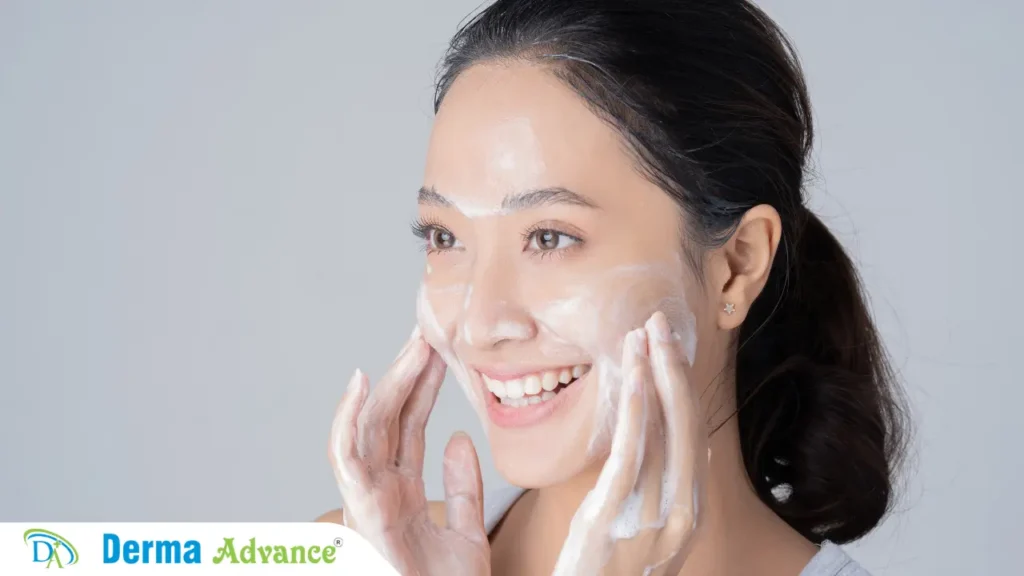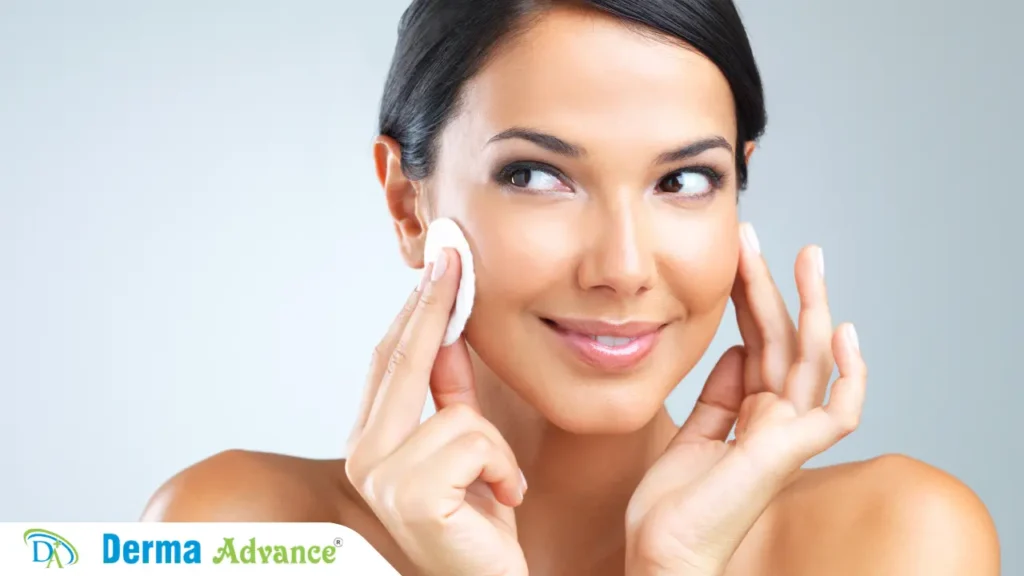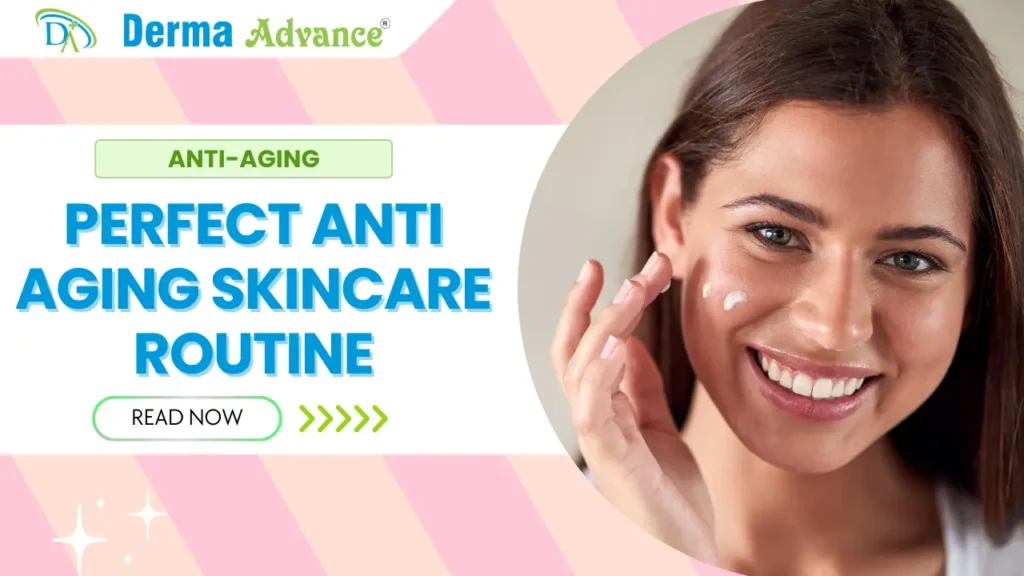Introduction to Anti Aging Skincare Routine
As we age, our skin goes through many changes. Understanding these changes can help us take better care of our skin.
The aging process begins with a loss of collagen, which is a protein that gives our skin structure and firmness. When we are younger, our bodies produce plenty of collagen, keeping our skin smooth and plump. However, as we get older, collagen production decreases. This leads to fine lines and wrinkles.
Another factor is the loss of elasticity. Elasticity is what allows our skin to bounce back after stretching. With age, our skin loses this ability, making it sag and look tired. This is often why people start to notice drooping around the cheeks and jawline.
Hydration is also crucial for youthful skin. Our skin can become drier as we age due to decreased oil production. This dryness can make wrinkles appear more pronounced and can lead to rough texture.
From my experience as a doctor, I have seen many patients who want to maintain a youthful appearance. I always tell them that proper skincare is essential. I have witnessed firsthand how a consistent routine with the right products can make a significant difference in the health and appearance of their skin.
Many patients have shared their success stories with me. By following simple yet effective skincare practices, they have managed to keep their skin looking vibrant and youthful. It gives me great joy to help them discover how small changes can lead to significant improvements.
In this article, I will share my insights and recommendations on how to create the perfect anti-aging skincare routine. Together, we can work towards achieving healthy, youthful skin.
Table of Contents
Identifying Your Skin Type for Anti-Aging
One of the most important steps in creating a good anti-aging skincare routine is knowing your skin type. Different skin types react differently to aging, and using the right products for your type can make a big difference.
In my experience as a doctor, I’ve seen how understanding skin type helps patients make better choices for their skin. Many people try all sorts of products without knowing if they are right for their skin type. This can lead to irritation, dryness, or breakouts, which no one wants—especially when we’re trying to look our best as we age.
Types of Skin
Let’s break down the common skin types and how each one is affected by aging.
1. Oily Skin
Oily skin produces more natural oils than other skin types. People with oily skin might notice a shiny look on their face, especially in areas like the forehead, nose, and chin. While oily skin can sometimes be frustrating, there is a silver lining—these natural oils can help delay the appearance of fine lines and wrinkles.
However, as we age, even oily skin can start to produce less oil, which can lead to dryness. This change can make the skin feel tight or rough, so choosing the right products to keep the skin balanced is important.
2. Dry Skin
Dry skin lacks moisture, and this can make it feel rough, flaky, or itchy. People with dry skin often notice that fine lines and wrinkles appear more quickly because the skin lacks the moisture needed to stay soft and flexible.
As we age, dry skin can become even drier, making it essential to use gentle, hydrating products that keep the skin moisturized. Avoiding harsh products and using moisturizers that lock in water can really help dry skin look its best.
3. Combination Skin
Combination skin is a mix of both oily and dry areas. Usually, the forehead, nose, and chin (also known as the T-zone) tend to be oilier, while the cheeks may feel dry. This skin type can be tricky to manage because it requires balancing the different needs of each area.
With age, combination skin may start to lean more towards dryness, especially in the dry areas. Using products that hydrate without being too heavy on the oily areas can be key to keeping combination skin healthy and youthful-looking.
4. Sensitive Skin
Sensitive skin is easily irritated and can react to certain products or environmental changes. People with sensitive skin often notice redness, itching, or a burning sensation with some skincare products.
As we age, sensitive skin may become more reactive, so it’s very important to choose gentle, fragrance-free products that won’t cause irritation. Soothing ingredients like aloe vera or chamomile can help keep sensitive skin calm and comfortable.
Importance of Knowing Your Skin Type
When you know your skin type, you can choose products that work with your skin rather than against it. For example, someone with dry skin might benefit more from rich, hydrating creams, while someone with oily skin might prefer lightweight, oil-free products.

Using products that match your skin type can help you get the most out of your anti-aging routine. The right products can boost hydration, improve texture, and make a real difference in how your skin ages over time.
In my experience, patients who know their skin type and choose products accordingly often see better results. It’s a small step that can lead to big improvements in skin health and appearance.
So, before you dive into your anti-aging routine, take a moment to understand your skin type. It’s a simple but powerful way to start your journey to healthier, more youthful skin.
The Core Steps in an Anti-Aging Routine
When it comes to anti-aging skincare, following a consistent routine is key. Each step plays an important role in keeping your skin healthy, fresh, and youthful. Let’s go over some of the core steps that I recommend to my patients. Starting with the basics can really make a difference over time.
Cleansing
Cleansing is the first and most essential step in any skincare routine. It’s all about removing dirt, oil, makeup, and other impurities that build up on the skin throughout the day or while we sleep. If these aren’t properly washed away, they can clog pores and lead to dull or tired-looking skin.

For anti-aging, I always suggest using a gentle cleanser that doesn’t strip away the skin’s natural oils. As we age, our skin tends to get drier, so we don’t want to use anything harsh that makes dryness worse. A mild, hydrating cleanser can help keep the skin balanced and feeling soft.
In my experience, patients who cleanse regularly see fewer issues with dullness or uneven texture. Clean skin allows the other products in the routine to absorb better, so it’s worth taking a couple of minutes to do it right. Just make sure to use lukewarm water and avoid scrubbing too hard. Gentle is best.
Toning
After cleansing, the next step I recommend is toning. Many people skip this step, but a good toner can make a big difference, especially for anti-aging. Toners help to remove any leftover impurities that cleansing might have missed, but they also do much more.

A well-chosen toner can help balance the skin’s pH, which can be disrupted by cleansing. When the skin’s pH is balanced, it’s in a better state to absorb any anti-aging products you apply afterward, like serums or moisturizers.
I recommend looking for a toner with soothing ingredients, especially if your skin tends to be on the sensitive side. For anti-aging, ingredients like rose water or hyaluronic acid can provide a gentle boost without irritation. Using a toner can really help prepare your skin for the next steps in your routine.
Exfoliation
Exfoliation is an important step that many people overlook or don’t do regularly enough. Exfoliating removes dead skin cells that build up on the surface, which can make skin look dull and feel rough. By getting rid of these cells, exfoliation helps reveal fresher, smoother skin underneath.

For anti-aging, regular exfoliation promotes cell turnover, which slows down as we get older. This step encourages new skin cells to come to the surface, giving your skin a more youthful look. But it’s important to choose the right type of exfoliator. Harsh scrubs can be too rough, especially for mature skin, so I suggest a gentle exfoliator that won’t cause irritation.
In my practice, I often recommend chemical exfoliants like glycolic acid or lactic acid in small doses. These ingredients dissolve dead cells without needing to scrub, making them easier on the skin. I usually suggest exfoliating once or twice a week, depending on your skin type, to keep things balanced and avoid overdoing it.
When exfoliating, remember to be gentle and consistent. Over-exfoliating can lead to redness or dryness, which is the opposite of what we want for anti-aging. A gentle approach gives the best results over time.
Key Anti-Aging Ingredients to Look For
When it comes to picking the right products for an anti-aging routine, certain ingredients are known to work wonders. Over the years, I’ve seen that some ingredients stand out for their proven effects on the skin.
Let’s go over a few of these ingredients, explaining how each one can help keep skin looking smoother, firmer, and younger. Including these in your routine can make a big difference in the long run.
Retinoids
Retinoids are one of the best-known ingredients in anti-aging skincare. They are a form of Vitamin A, and they’re incredibly effective at boosting collagen production. Collagen is the protein that keeps our skin firm, but we produce less of it as we get older.
By using retinoids, we can help the skin rebuild collagen, which reduces the appearance of fine lines and wrinkles. Retinoids also encourage faster cell turnover, meaning old skin cells are replaced more quickly by fresh ones. This helps with overall skin texture and tone.
However, retinoids can be a bit strong, especially for sensitive skin. I usually suggest starting with a lower concentration and using it only a few times a week. Gradually, as your skin gets used to it, you can increase the frequency.
Overall, retinoids are a powerhouse ingredient for anti-aging, but they need to be used carefully. If you’re new to them, consider consulting with a dermatologist for guidance.
Peptides
Peptides are another great ingredient for anti-aging. Peptides are small proteins that play an important role in helping the skin repair and rejuvenate itself. They support the skin’s natural healing processes, which is very useful as we age.
Peptides work by sending signals to our skin cells, telling them to produce more collagen. This can improve skin’s firmness and elasticity, making it look healthier and less prone to wrinkles.
Since peptides are generally gentle, they work well with other ingredients and are suitable for most skin types. Including a peptide-rich serum or moisturizer in your routine can really enhance the anti-aging benefits.
Antioxidants
Antioxidants are essential for protecting the skin from daily wear and tear. Our skin is exposed to pollution, UV rays, and other environmental factors that create free radicals. These free radicals can damage our skin cells and accelerate aging.
That’s where antioxidants come in. Ingredients like Vitamin C and Vitamin E help neutralize these free radicals, reducing their harmful effects on the skin. By protecting our skin from this damage, antioxidants help prevent signs of aging like wrinkles and dark spots.
Vitamin C is particularly popular because it also helps brighten the skin and improve uneven skin tone. If you’re looking to add antioxidants to your routine, a Vitamin C serum is a great choice. Just remember to use sunscreen as well, as antioxidants work best with sun protection.
Hyaluronic Acid
Hyaluronic acid is a wonderful ingredient for keeping the skin hydrated. Hydration is crucial for a youthful look because dry skin tends to look more aged and shows fine lines more easily.
Hyaluronic acid has the unique ability to hold a large amount of water, which helps keep the skin plump and smooth. By drawing moisture into the skin, it gives a softer, more hydrated appearance, which can reduce the look of fine lines.
It’s also a very gentle ingredient, making it suitable for almost all skin types. I often recommend a hyaluronic acid serum or moisturizer as a staple in any anti-aging routine, especially if your skin feels dry or tight.
Overall, hyaluronic acid is all about maintaining moisture, which is essential as we age. It works well with other ingredients too, so it’s easy to add to most routines.
Each of these ingredients brings unique benefits to the table. Finding products that include one or more of these can help create a well-rounded anti-aging routine. It’s all about giving the skin what it needs to stay healthy and youthful.
Building Your Morning and Evening Anti-Aging Routines
Creating a consistent skincare routine is essential for keeping skin healthy and youthful. I always tell my patients that a simple, focused approach can make a big difference over time. Having both a morning and evening routine helps give the skin the right care throughout the day.
Morning Routine
The morning routine is all about preparing the skin for the day ahead and protecting it from environmental damage, like pollution and sun exposure. Let’s go through each step and why it matters.

Step 1: Gentle Cleanser
Start the day by washing your face with a gentle cleanser. This helps remove any oil or impurities that built up overnight, so your skin feels fresh and ready for the next steps.
A gentle cleanser is best because it won’t strip away the natural oils that protect your skin. Look for something mild and soothing, especially if you have sensitive skin.
Step 2: Toner
After cleansing, apply a toner to balance your skin’s pH and add a refreshing layer of hydration. Toners also help prepare the skin to better absorb the next products.
Think of toner as a quick pick-me-up for your skin. It doesn’t need to be anything harsh; a simple hydrating toner is great to keep the skin feeling balanced and comfortable.
Step 3: Antioxidant Serum
Next, apply an antioxidant serum, like Vitamin C. Antioxidants protect the skin from free radicals caused by sun exposure and pollution. They also help brighten the skin and even out skin tone.
Using an antioxidant serum in the morning gives your skin an extra layer of defense. It’s like a shield that keeps harmful elements from speeding up the aging process.
Step 4: Moisturizer
Now, it’s time to moisturize. Choose a lightweight moisturizer that hydrates without feeling heavy. This keeps your skin smooth and soft throughout the day.
Moisturizer helps lock in the serum you just applied, giving your skin the hydration it needs. Even if you have oily skin, a light moisturizer is still beneficial.
Step 5: Sunscreen
Finally, always finish your morning routine with sunscreen. A broad-spectrum sunscreen with SPF 30 or higher protects your skin from harmful UV rays, which are a major cause of premature aging.
This step is non-negotiable. Daily sunscreen prevents wrinkles, sun spots, and other signs of aging. I recommend using it every day, even on cloudy days.
Evening Routine
At night, your skin goes into repair mode, so your evening routine should focus on cleansing and nourishing the skin. This is also a good time to use anti-aging treatments.

Step 1: Cleanse Again
Start by cleansing your face to remove makeup, oil, and dirt that has built up throughout the day. This clears the skin and prepares it for any treatments you’ll apply next.
Use a gentle cleanser, but make sure it’s effective enough to remove all traces of makeup. Clean skin absorbs products much better, so this step is important.
Step 2: Exfoliate (2-3 Times a Week)
Exfoliating a few times a week helps remove dead skin cells and promotes cell turnover. This keeps the skin smooth and allows your treatments to penetrate more deeply.
Be gentle with exfoliation, especially if you have sensitive skin. You don’t need to do this every night – 2-3 times a week is enough for most people.
Step 3: Retinoids or Targeted Treatments
Retinoids are one of the most effective anti-aging ingredients available. They help boost collagen, reduce wrinkles, and improve skin texture. I usually recommend using retinoids at night because they make the skin more sensitive to the sun.
If retinoids feel too strong, you can use other treatments suited for your skin’s needs, like peptides or serums for dark spots. Just be consistent, and remember to start slow if you’re new to these ingredients.
Step 4: Hydrating Serum
After your treatment, apply a hydrating serum to replenish moisture. Serums with ingredients like hyaluronic acid help to lock in hydration, keeping the skin plump and smooth.
Hydration is key for youthful skin, so I recommend a good hydrating serum to make the skin feel soft and look vibrant.
Step 5: Night Cream
Finally, end your routine with a nourishing night cream. Night creams are often richer than daytime moisturizers, providing extra moisture as your skin repairs itself overnight.
This helps your skin wake up feeling fresh and hydrated. A good night cream can make a big difference, especially if you’re dealing with dryness or fine lines.
Both morning and evening routines are important parts of an anti-aging skincare routine. By sticking to these steps, you’re giving your skin everything it needs to stay strong, healthy, and youthful.
Lifestyle Factors Impacting Aging
When it comes to aging, skincare routines are important, but lifestyle plays a big role too. As a doctor, I’ve seen how certain habits and daily choices can make a real difference in how the skin ages. Let’s look at some simple lifestyle changes that can help keep skin looking youthful and healthy.
Healthy Eating
A balanced diet is one of the best gifts you can give your skin. Eating plenty of fruits and vegetables is key because they’re full of antioxidants, which protect the skin from damage.
Fruits like berries, oranges, and kiwis are rich in Vitamin C, which helps with collagen production and keeps the skin firm. Leafy greens like spinach provide essential nutrients that nourish the skin from within.
Omega-3 fatty acids, found in foods like salmon, walnuts, and flaxseeds, are also great for the skin. They help keep the skin moisturized and can reduce inflammation, which is a big help in preventing signs of aging.
So, making sure your meals include a good mix of colorful fruits, vegetables, and healthy fats can truly support your skin’s health over time.
Hydration
Staying hydrated is another simple yet powerful way to keep skin looking youthful. Drinking enough water each day helps maintain skin elasticity, making it look more plump and smooth.
When we’re well-hydrated, our skin cells can function better, which means they can repair themselves more effectively. Dry, dehydrated skin tends to show lines and wrinkles more easily, so keeping up with water intake is essential.
I usually suggest aiming for at least 8 glasses of water a day, but this can vary depending on individual needs. Adding water-rich foods like cucumbers, watermelon, and oranges to your diet is also a great way to stay hydrated.
Quality Sleep
Getting a good night’s sleep does wonders for the skin. When we sleep, the body goes into repair mode, healing any damage from the day. This is when the skin regenerates, and new cells are produced.
Aim for 7-8 hours of quality sleep each night. Good sleep helps reduce under-eye bags, improves skin tone, and gives a healthy glow. I always tell patients that sleep isn’t just about feeling rested; it’s also a key part of skincare.
If possible, try to keep a consistent sleep schedule. Going to bed and waking up at the same time each day can improve the quality of your sleep, which in turn benefits your skin.
Stress Management
Stress can take a toll on the skin, causing issues like breakouts, dullness, and even premature wrinkles. When we’re stressed, the body releases cortisol, a hormone that can lead to inflammation and damage to collagen.
Finding ways to manage stress can have a positive impact on both your skin and your overall well-being. Techniques like meditation, deep breathing, and regular exercise can all help to lower stress levels.
Personally, I find that even a few minutes of meditation or a short walk outside can make a big difference. Regular exercise is also fantastic for improving circulation, which brings more oxygen and nutrients to the skin.
So, while skincare products are important, these lifestyle habits form a solid foundation for healthy, youthful skin. Simple changes in diet, hydration, sleep, and stress management can go a long way in slowing down the aging process and keeping skin radiant.
Consistency and Patience in Anti-Aging
Importance of Regularity
When it comes to anti-aging, consistency is truly the key. Using products once in a while won’t give you the results you’re looking for. Our skin benefits most from routines that are followed daily. Just like any healthy habit, the more regular you are, the better the results.
For example, if you’re using a retinoid or an antioxidant serum, it can take weeks or even months before you see the full effects. This is completely normal. Anti-aging products work by gradually improving the skin’s health and resilience, so they need time to show visible changes.
From my experience, when patients stick to a routine, they notice smoother texture, better hydration, and a reduction in fine lines over time. A daily routine, with products suited to your skin, can make a noticeable difference over the years.
Managing Expectations
It’s also important to have realistic expectations with anti-aging products. Skincare can improve skin texture, firmness, and radiance, but it won’t completely reverse aging. I always encourage patients to look at their progress gradually rather than expecting overnight miracles.
When starting a new product, give it at least 8-12 weeks before evaluating its effectiveness. Aging is a slow process, and so is skincare; it’s more about prevention and maintenance than instant results. Staying patient and consistent with your routine will bring benefits over time.
With a realistic approach, you’ll feel more satisfied and motivated to keep up with your routine without getting discouraged by the slow pace of changes.
When to Seek Professional Help
Signs to Consult a Dermatologist
While a regular skincare routine can handle most anti-aging concerns, there are times when professional help may be needed. For example, if you’re noticing deep wrinkles, stubborn dark spots, or significant sagging, it may be a good idea to see a dermatologist.
Conditions like severe hyperpigmentation, loss of elasticity, or sun damage may require treatments beyond home skincare products. Dermatologists can assess your skin more closely and recommend options that suit your specific needs.
Treatment Options
For those who want more noticeable anti-aging results, there are several professional treatments available. Options like chemical peels can improve skin texture and tone by removing dead skin layers and promoting new cell growth.
Laser therapy can target fine lines, age spots, and other signs of aging. This treatment helps to boost collagen, which keeps the skin firm and smooth. For more immediate and visible results, injectables like Botox or dermal fillers can reduce wrinkles and add volume where needed.
These treatments offer quicker and more targeted results but are best done under a dermatologist’s care. I recommend discussing your options with a professional if you’re considering these treatments, as they can provide guidance based on your skin type and goals.
Remember, anti-aging is a journey. With patience, consistency, and the right help when needed, you can keep your skin healthy and vibrant for years to come.
Conclusion
In summary, creating an effective anti-aging skincare routine involves several key components. First, understanding your skin type is crucial so that you can choose the right products. Next, a consistent routine that includes cleansing, toning, exfoliating, and applying active ingredients will help your skin stay healthy and youthful. Don’t forget to incorporate sun protection and hydrate your skin adequately.
It’s essential to remember that aging is a natural process, and while we cannot stop it, we can certainly manage its effects. By adopting these practices, you can significantly enhance the appearance and health of your skin. And it’s never too late to start! Whether you’re in your 30s, 40s, or beyond, small changes can lead to remarkable improvements in your skin’s condition.
At Derma Advance, we are committed to helping you on your skincare journey. Our expert dermatologists can guide you in choosing the best products and treatments tailored to your skin type and concerns. Together, we can help you achieve healthier, younger-looking skin. Don’t hesitate to reach out for a consultation!
FAQs
What age should I start using anti-aging products?
It’s generally a good idea to start incorporating anti-aging products in your late 20s or early 30s. Prevention is key, and early use of products can help maintain your skin’s health.
Can I combine different active ingredients?
Yes, but it’s important to do so carefully. Some active ingredients can enhance each other’s effects, while others may cause irritation if used together. Always consult with a dermatologist for personalized advice.
How often should I exfoliate?
Exfoliation should be done 2-3 times a week, depending on your skin type. If you have sensitive skin, start with once a week and adjust as needed.
Are natural remedies effective for anti-aging?
Yes, many natural remedies can be effective in supporting skin health and combating aging. Ingredients like antioxidants, vitamins, and essential oils can provide great benefits. At Derma Advance, we can recommend natural options that work well for you.
What lifestyle changes can improve my skin’s appearance?
Healthy eating, staying hydrated, getting quality sleep, and managing stress are all crucial for maintaining youthful skin. Simple changes in your daily routine can lead to significant improvements over time.
To learn more about our Treatments you can visit:
- Hydrafacial in Lucknow
- Botox Treatment in Lucknow
- Laser Hair Reduction in Lucknow
- Prp Treatment in Lucknow
To check out more information on Anti-Aging Tips you can read:

